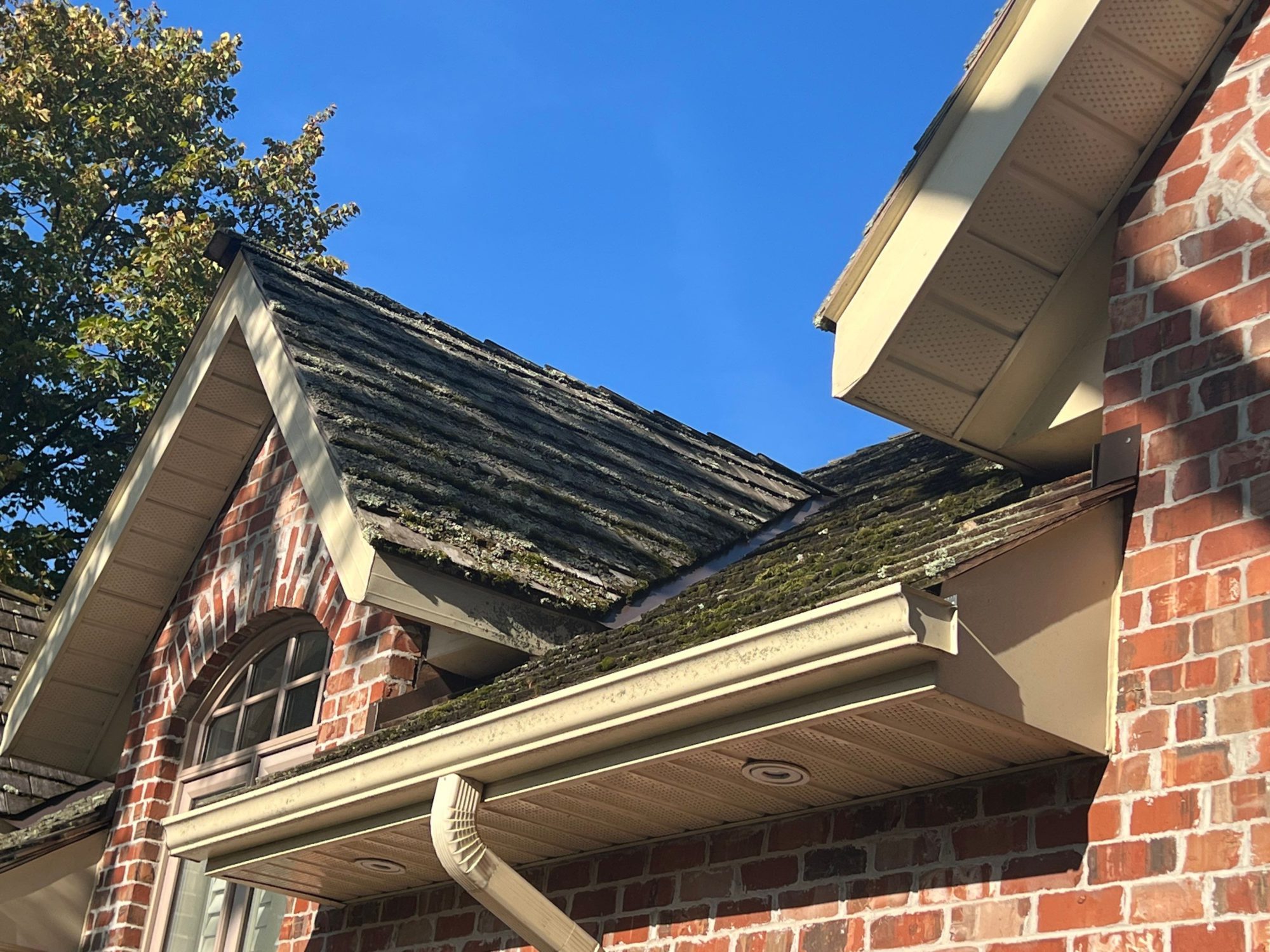The serene beauty of a moss-covered forest floor can be enchanting, but when that green carpet starts invading your roof, it becomes a cause for concern. Moss growth on roofs is a common issue that many homeowners face, particularly in regions with high humidity and shaded areas. In this comprehensive 900-word article, we’ll explore the causes, consequences, and effective solutions for addressing moss growth on your roof.
Understanding Moss Growth on Roofs
What is Moss and Why Does it Love Your Roof?
Moss is a non-vascular plant that thrives in damp and shaded environments. Roofs, especially those in regions with abundant rainfall or surrounded by trees, provide an ideal habitat for moss to take root and spread. The spores find their way to your roof, where they latch onto the surface and begin the colonization process.
The Perfect Conditions for Moss Infestation
Several factors contribute to the growth of moss on roofs:
- Shade: Moss loves shaded areas, and roofs with limited exposure to sunlight are at a higher risk.
- Humidity: High humidity levels create a moisture-rich environment that moss finds irresistible.
- Neglected Surfaces: Roofs with accumulated debris, such as leaves and twigs, create pockets for moss to thrive.
Consequences of Moss Growth
Aesthetic Issues:
The green, velvety appearance of moss might seem harmless at first, but it can significantly impact your home’s curb appeal. Moss-covered roofs can create a neglected and unkempt look, reducing the overall aesthetic value of your property.
Structural Concerns:
While moss itself may not directly damage roofing materials, the consequences of its presence can be problematic. Moss can trap moisture against the roof’s surface, leading to the development of rot and deterioration in wood-based roofing materials.
Blocked Gutters:
As moss accumulates on the roof, it can find its way into gutters, causing blockages. This can lead to water overflow, potential water damage, and compromise the functionality of your gutter system.
Effective Solutions for Moss Removal
1. Manual Moss Removal:
- Use a soft-bristle brush to gently scrub moss off the roof surface.
- Clear debris and clean gutters regularly to prevent moss from finding a comfortable home.
2. Chemical Treatments:
- Apply moss-killing solutions or chemical treatments to the affected areas.
- Ensure the chosen products are safe for both the roofing material and the environment.
3. Preventive Measures:
- Trim overhanging branches to allow more sunlight onto the roof.
- Install zinc or copper strips along the ridge of the roof, as these metals can inhibit moss growth.
4. Professional Soft Washing:
- Consider hiring professionals for soft washing, a method that uses low-pressure water and specialized cleaning solutions to safely and effectively remove moss and other contaminants.
Eco-Friendly Approaches to Moss Control
1. Mild Detergents and Soaps:
- Use environmentally friendly detergents or soaps to create a cleaning solution that is safe for plants and the surrounding environment.
2. Vinegar and Baking Soda:
- A mixture of vinegar and baking soda can be an effective, eco-friendly solution for moss removal.
3. Biodegradable Moss Killers:
- Opt for moss-killing products that are biodegradable and have minimal environmental impact.
Conclusion:
Moss growth on your roof may seem like a harmless green invasion, but its consequences can extend beyond aesthetics. Understanding the factors contributing to moss growth, its potential impacts, and adopting effective removal and preventive strategies can help you reclaim the integrity and appearance of your roof. Whether you choose to take a DIY approach or seek professional assistance, tackling moss growth promptly is key to maintaining a healthy and resilient roofing system for your home.

